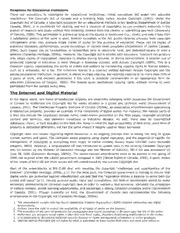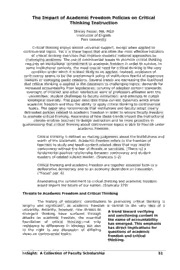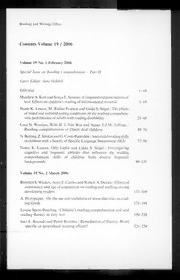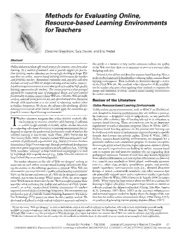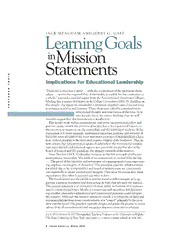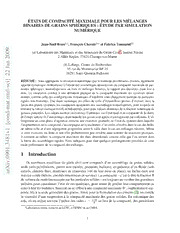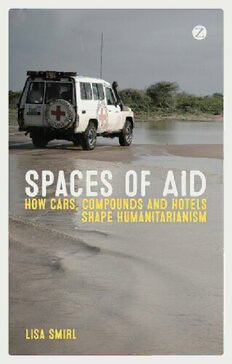
Spaces of Aid: How Cars, Compounds and Hotels Shape Humanitarianism PDF
Preview Spaces of Aid: How Cars, Compounds and Hotels Shape Humanitarianism
About the author Lisa Smirl was a lecturer in international relations at the University of Sussex. She worked previously for the United Nations Development Programme in Africa, South- east Europe and Central Asia. A Rhodes Scholar at Balliol College, Oxford, she did graduate work at the London School of Economics and completed a PhD at the University of Cambridge in 2010. Lisa was from Manitoba, Canada. She died in 2013 at the age of 37. SPACES OF AID HOW CARS, COMPOUNDS AND HOTELS SHAPE HUMANITARIANISM Lisa Smirl Zed Books London Spaces of Aid: How Cars, Compounds and Hotels Shape Humanitarianism was first published in 2015 by Zed Books Ltd, 7 Cynthia Street, London n1 9jf, uk www.zedbooks.co.uk Copyright © Arran Gaunt 2015 The right of Lisa Smirl to be identified as the author of this work has been asserted by her in accordance with the Copyright, Designs and Patents Act 1988 Set in Monotype Plantin and FontFont Kievit by Ewan Smith, London Index: ed.emery@thefreeuniversity.net Cover image © Juan Vrijdag/Panos Cover designed by roguefour.co.uk All rights reserved. No part of this publication may be reproduced, stored in a retrieval system or transmitted in any form or by any means, electronic, mechanical, photocopying or otherwise, without the prior permission of Zed Books Ltd. A catalogue record for this book is available from the British Library isbn 978-1-78360-350-3 hb isbn 978-1-78360-349-7 pb isbn 978-1-78360-351-0 pdf isbn 978-1-78360-352-7 epub isbn 978-1-78360-353-4 mobi CONTENTS Figures | vi Note to the reader | vii Foreword | viii Acknowledgements | x Preface |xii Abbreviations | xvi Introduction . . . . . . . . . . . . . . . . . . . . . .1 1 Stories from the field, stories of ‘the field’: how aid workers experience the space of the field mission . . . .20 2 Exploring the humanitarian enclave. . . . . . . . . . . 47 3 How the built environment shapes humanitarian intervention . . . . . . . . . . . . . . . . . . . . .80 4 Building home away from home: post-tsunami Aceh, and the single-family house . . . . . . . . . . . . . .114 5 Playing house: rebuilding the Gulf Coast after Katrina . 165 Conclusion . . . . . . . . . . . . . . . . . . . . . 202 Bibliography | 211 Index | 233 FIGURES 4.1 IFRC transitional shelter, Banda Aceh (author’s own photo, May 2006) . . . . . . . . . . . . . . . . . . . . . . .126 4.2 Example of a post-tsunami house, Banda Aceh (author’s own photo, May 2006). . . . . . . . . . . . . . . . . . . . 128 4.3 Example A: floor plan, tsunami house (reproduced with permission from the UN-Habitat Settlements Recovery Monitoring Programme) . . . . . . . . . . . . . . . . .130 4.4 Example B: floor plan, tsunami house (reproduced with permission from the UN-Habitat Settlements Recovery Monitoring Programme) . . . . . . . . . . . . . . . . . 131 4.5 Example of a ‘traditionally inspired’ tsunami house, Banda Aceh (author’s own photo, May 2006). . . . . . . . . . . 138 5.1 MVRDV’s Concept Bent (© MVRDV; reproduced with permission from www.mvrdv.nl/#/projects/382mirneworleans conceptbent) . . . . . . . . . . . . . . . . . . . . . . 172 5.2 Computer-generated screen shots – design by Atelier Hitoshi Abe (reproduced with permission from www.a-slash.jp/) . . 176 5.3 The KC 308 floor plan (photo credit: Jeff Bounds; reproduced with permission from Cusato Cottages, LLC website: www. cusatocottages.com/selectaplan.php#) . . . . . . . . . . 184 5.4 Maison basse floor plan (reproduced with permission from Upton and Vlach 1986). . . . . . . . . . . . . . . . . . 193 5.5 2732 Orleans Avenue (photograph © Robert Polidori, reproduced with permission) . . . . . . . . . . . . . . . 200 NOTE TO THE READER This book is based on Lisa Smirl’s PhD thesis, which was suc- cessfully defended at the University of Cambridge in 2010. She died before she could publish it. Lisa was a pioneering scholar of the spatial dimensions of aid and development work, an area of inquiry which has expanded considerably in recent years. Her illness and death meant that she could not make use of scholarship published after 2010, nor could she incor- porate discussion of events since then. With assistance from Ken Barlow at Zed Books, and with the advice of Lisa’s friends and colleagues, we have lightly edited the manuscript for style, grammar and repetition. Those interested will find additional papers, data and other material by Lisa at spacesofaid.word press.com. Tarak Barkawi, London School of Economics Anna Stavrianakis, University of Sussex FOREWORD When Tarak Barkawi and Anna Stavrianakis asked me to provide a foreword for Lisa Smirl’s book, Spaces of Aid, I was both honoured and humbled. To enthusiastically greet the posthumous publication of a young scholar’s brilliant PhD thesis is not enough. The eloquence and prescience of Lisa’s book constantly reminds us of our loss. Praise cannot recoup the intellectual riches that would have been. That Zed Books is publishing Spaces of Aid, however, has to be warmly acknowledged. That which Lisa did achieve is now here for all to see, enjoy and learn from. I first met Lisa in March 2009, when I gave a talk at the Dep art- ment of Politics and International Relations (POLIS) at Cambridge where she was completing her PhD. The title of my seminar was ‘Aid, Architecture and Security in Sudan’. I had been in South Sudan about nine months earlier completing a consultancy for UNHCR. While I had been a fairly regular visitor during the civil war, this consultancy was the first time I’d been back to South Sudan for nine years. Although peace had been declared in 2005, the most striking thing in 2008 was the withdrawal of international aid workers into fortified aid compounds and the restriction of their movements. Parad ox ic ally, during the war years, internationals had moved around a lot more freely. My Cambridge talk was a first attempt to make sense of this counter-intuitive experience through a tentative exp loration of the spatial dimensions of humanitarian aid. It was a great delight t herefore to find Lisa in the audience. As Spaces of Aid shows, through her research she was already there, in full command of this overlooked but vital intellectual terrain. In the pub afterwards, I learnt more from Lisa than I could give in return. Although I only knew her for a tragically short period of time, it foreword | ix was clear from the first that I’d met a warm, challenging and strong woman. Spaces of Aid is an important book. It’s about the spaces, environ- ments and material objects of aid. While neglected and taken for granted, the built environment and material infrastructures that support international aid - the gated office and accommodation complexes, the four-wheel drive vehicles, and the exclusive bars and hotels that international aid workers frequent - circumscribe experience and influence policy. Spaces of Aid is the first book-length treatment of the closed environment that has been euphemistically summarised as Aid Land or the Aid Bubble. Not only does Spaces of Aid give this ignored but essentially subversive field of research visibility and coherence, the trend toward securitization that Lisa describes has, if anything, continued to deepen. International aid workers are physically remote from the societies through which they endlessly rotate. By showing how a culture of separation preceded the securitized hardening of the aid world’s built and engineered environment, Spaces of Aid is an original and invaluable contribution to a debate that, in many respects, is only now beginning. Mark Duffield, Emeritus Professor Global Insecurities Centre, University of Bristol
The list of books you might like

Atomic Habits James Clear

Shatter Me Complete Collection (Shatter Me; Destroy Me; Unravel Me; Fracture Me; Ignite Me)

Credence

Mind Management, Not Time Management

Acts & Facts Vol. 35 No. 1 January 2006

Building Product Models: Computer Environments, Supporting Design and Construction

Missouri Official 2005 State System Mileage

A Defense of the Nicene Definition (De Decretis)

ultimate traffic Live User Guide

DTIC ADA275521: CBSD: The Celestial Background Scene Descriptor
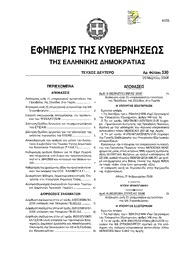
Greek Government Gazette: Part 2, 2006 no. 330

Greek Government Gazette: Part 7, 2006 no. 916

Iron Troikas - The New Threat from the East (2006)

büyükbaş hayvan yetiştirme
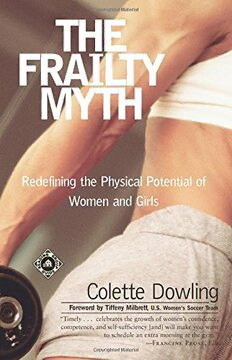
The Frailty Myth: Redefining the Physical Potential of Women and Girls

Dorothy by Evelyn Raymond

Daily life of the ancient Romans

